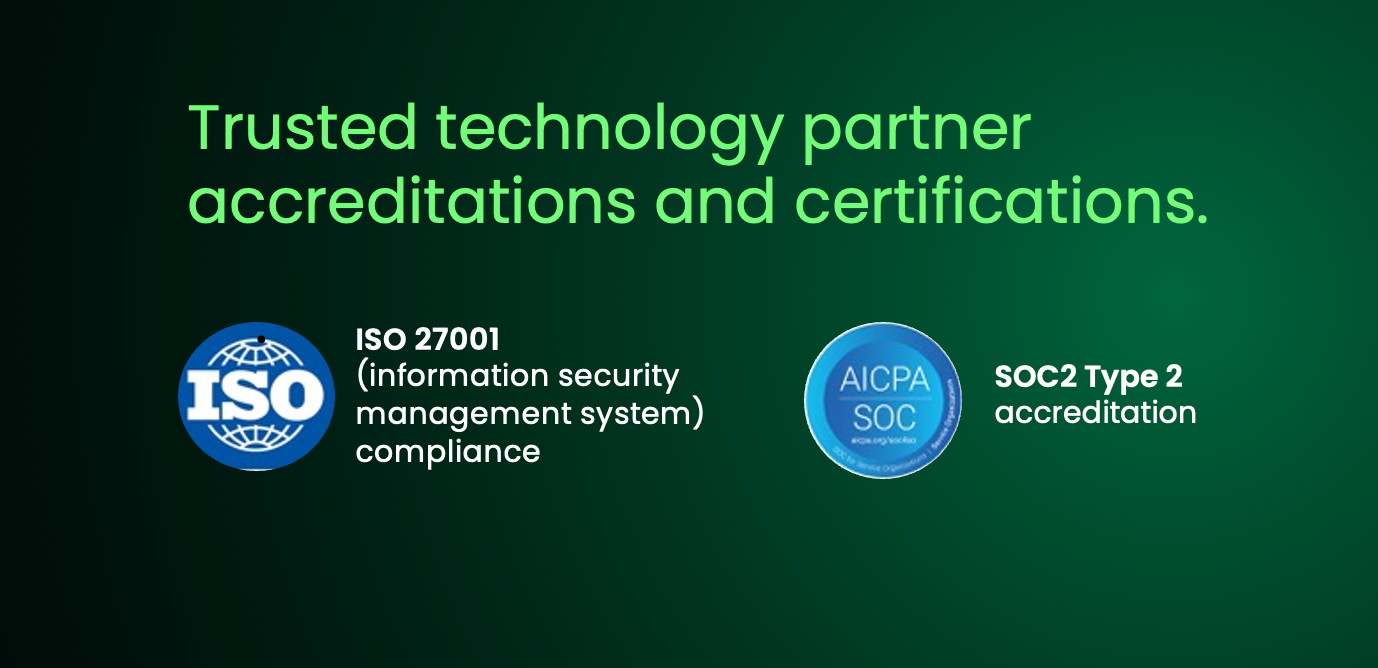AI products and services: The next frontier for the financial industry.
The impact of AI on industries at large has been rapid and significant. However, the true business potential of AI-powered financial systems needs to be filtered through key aspects that move beyond the novel and the experimental to align strategic objectives, innovation and regulatory responsibility.
July 16, 2025
Insights

Australia has historically been fast to adopt new technologies with ~40% of SME currently utilising AI as part of their operations*, however speed is not always a direct path to reward.
When it comes to AI implementation, objectivity is paramount to identify where investment, prioritisation and efforts are focused. At a time when it’s increasingly difficult to identify what is legitimate, or even welcome, authenticity and humanity have escalating importance.
Succumbing to FOMO (the fear of missing out) is often a straight shot to homogenisation and in technological innovation, lack of distinctiveness is tantamount to invisibility.
The tension point
Bridging the gap between the old and the new
The perception that AI is the silver bullet for businesses, heralding transformative change by streamlining operational efficiency and accelerating innovation is only partly true.
The possibilities, yet untapped, have already paid dividends through well-prompted Generative AI making us more efficient wordsmiths, building connection pathways to better service customers, aiding financial risk management and even tweaking our code.
But true synergy happens at the intersection of AI capability and human intuition.
The role of people is not in simply adapting to crafting better prompts, but to provide the connective tissue between the functional and the relatable. In financial assessment, the AI can aggregate, cross-reference, enrich and categorise, but it can’t connect at a human level to guide and reassure…at least not yet.
A workforce that can operate seamlessly with AI to achieve business objectives and connect with customers in an authentic and human way is one that will dominate the future landscape.
AI is not a collective term
Referencing AI in sweeping generalisations is to ignore the hyper specialised aptitude of the different types. For the general population, Generative AI is an amusement - mostly manifesting in uber-realistic imagery, questionable grammar and inaccurate information. However, for banking and financial institutions (BFIs) the impact is felt through fundamental changes in operations and approach. Replacing the mundane, reimagining customer interactions and assisting in financial risk management.
As mentioned in EY’s report, the banking sector is adapting to a landscape sculpted by the six dominant trends of emerging technologies, ecosystem models, sustainability, digital assets, talent acquisition and regulatory adjustments… In this dynamic environment, GenAI has emerged as a crucial enabler of innovation and transformation, empowering financial institutions to surpass today’s sophisticated client expectations of faster, more convenient and seamlessly integrated services.
Knowing your customer and KYC – have never been more vital
Agentic AI (where AI executes tasks with user authority) and Embedded Finance (the ability to service customers in different verticals within their preferred brand’s digital platform) have collectively elevated the customer from an end-user to the driving force for innovation. Ownership of the customer is the new battleground, as lines between transactions become blurred and of less relevance to consumers. From a business perspective, responsive technology that automates financial validation assessments or adheres to regulatory frameworks while maintaining a frictionless user-experience, is the ambition.
In financial services, the industry has long suffered from the reputation of slow, legacy-bound institutions, building regulatory and procedural walls between itself and the customers it serves. Innovation, while desirable, has been out of reach; cost-prohibitive, resource hungry and stalled through indecision.
The future is hybrid
Beyond buy vs build
Buy vs build is now considered binary, with ‘hybrid’ emerging as the preferred method to accelerate digital innovation and transformation. Retaining agency is particularly relevant for businesses in market for a technology provider, especially in environments where integrations are complex and multi-faceted.
Without access to capital, loss of identity and relevance makes businesses vulnerable, in many cases reduced to the data they hold as M&A prospects circle.
Trust is no longer reserved for the customer x business relationship, but between businesses in coopetition and where APIs are integrated and data shared. While there is a chasm between the generative AI of the social platforms and the explainable AI (XAI) of a precise and intelligent code, as with any tool, the value and impact rely on expertise and application.
[The] shift toward strategic implementation—including the growing trend of strategic partnerships—recognizes that success with AI isn’t about how much you spend, but how intelligently you invest across build, buy, blend, and partner strategies.
Deborah Perry Piscione, Harvard Business Review
Reconfiguring your workforce
While digital transformation can enable widespread efficiencies, it does require a more highly calibrated workforce. One that can adapt and refocus efforts with automation removing the burden of manual tasks and processes.
Resilience also comes into play, as increased effectiveness depends on the agility, training, access and appetite of the team and the commitment of the business to provide a scaffold to support both adaptation and learning while holding space to recover, should they fail.
Preparing your organisation should not simply focus on implementation of AI, but plan to realise the full potential in expediting business objectives. This needs time. Forcing progress to adhere to an unrealistic timeframe can have a fundamental impact, exposing operational limitations and any vulnerability in the workforce - a weak foundation that will be unable to support rapid and robust growth.
Zero Ops isn’t entirely a new concept: it's a modern take on the timeless quest for operational excellence. But the stakes are much higher today. With revolutionary technologies like AI at our fingertips, banks should not settle for incremental gains, but set their sights for transformative breakthroughs.
Deloitte report: Transforming banking productivity for tomorrow
Cyber resilience at the intersection of ethical and security safeguards
AI is enjoying a moment of ‘permitted’ test and learn at a time with evolving regulation. Regulatory frameworks have not kept pace, with inaccuracies and ‘fake’ information eroding trust.
As the use of AI matures, increased focus on its safe and responsible use will also increase and while no industry is immune, the financial sector holds significant responsibility in managing and safeguarding personal and financial information.
With trust a linchpin of both B2B customers and D2C end-users, financial technology providers will come under increased scrutiny. In this environment, accreditations like SOC2 Type2 are not a ‘nice to have’, but a clear signal to industry (and existing and potential partners) that their infosec standards are reliable, consistent and effective over time.

Explainable AI and enrichment automation ‘out of the box’.
Intelligence in automation is more than simply restructuring workflow.
Efficient and responsible use of AI in the area of machine learning (ML) to aggregate information from various sources and train, validate, and test AI models can transform data into decisions.
Data collection in AI and ‘raw information’ is at its most potent when ‘enriched’. This moves beyond categorisation, with a data-agnostic approach resulting in more types of information ingested, and the more data points, the more robust the decisioning capability.
Summary
How AI can shape the future of the financial sector, whether for assessment, enrichment, workflow or innovation, is dependent on key strategic factors that have cumulative impact on how businesses grow and scale with success and sustainability.
• Operations; identifying where innovation can have the greatest impact on efficiency and cost savings
• Workforce; assessing appetite, readiness and support mechanisms to retain the value of human involvement
• Trust; responsibility to customers, their data and ensuring accuracy of information
• Strategic alignment; add value to existing objectives and uncover new opportunities
In the race to capitalise on opportunities, it’s sobering to realise that universal access has the very real potential to drown out differentiation which conversely spotlights its importance and value.
The impulse is to keep up with everyone else, however, doing so in alignment with business, brand and strategic goals keeps the compass of progress pointed true north. This has the very real value of building traction with stakeholders and customers, and even driving change at industry level.
As an AI-native technology company, Tiimely has been working in tandem withAI and machine learning for more than 8 years. The impact and value have manifest beyond product innovation to influence data interoperability, helping to shape its platform technology, achieve frictionless integration and drive value from intelligent, actionable insights.
Machine learning drives data enrichment which in turn drives our automation.The accumulation of millions of data points already ingested, strengthens the accuracy and increases the inherent value of the platform.
Appendix
* Australian Government: The Dept. of Industry, Science and Resources, 2024 Q4
Published June 2025

